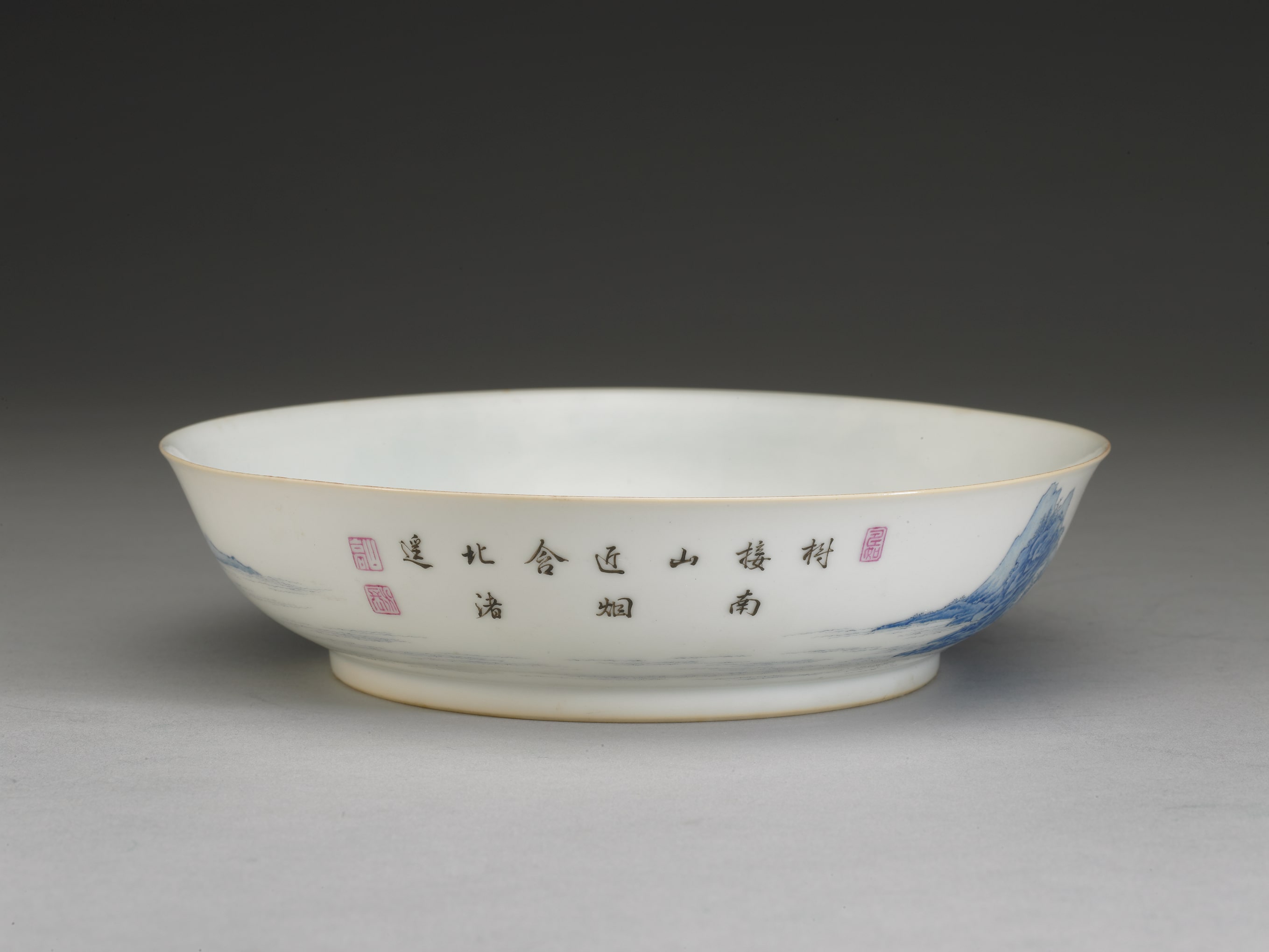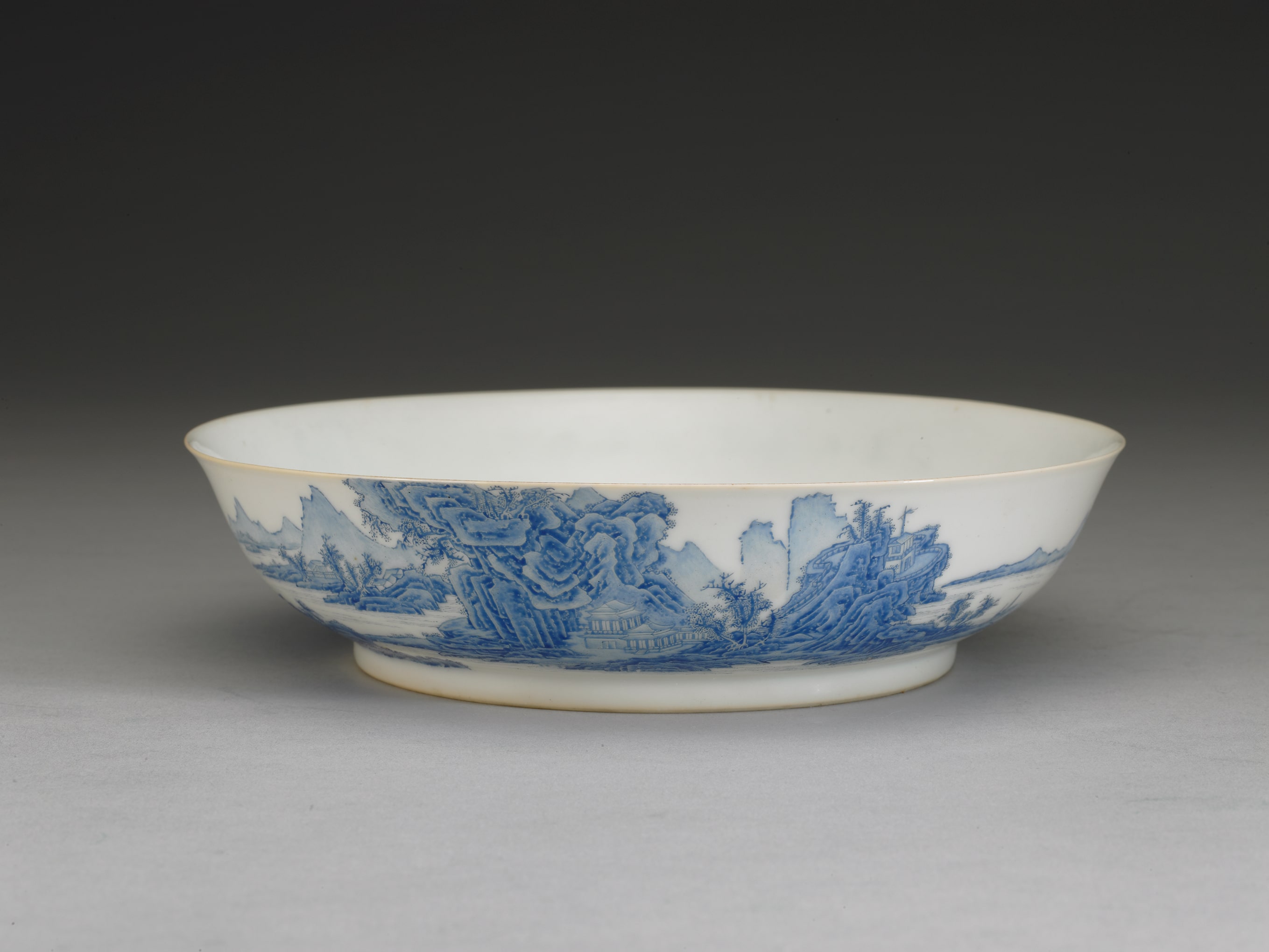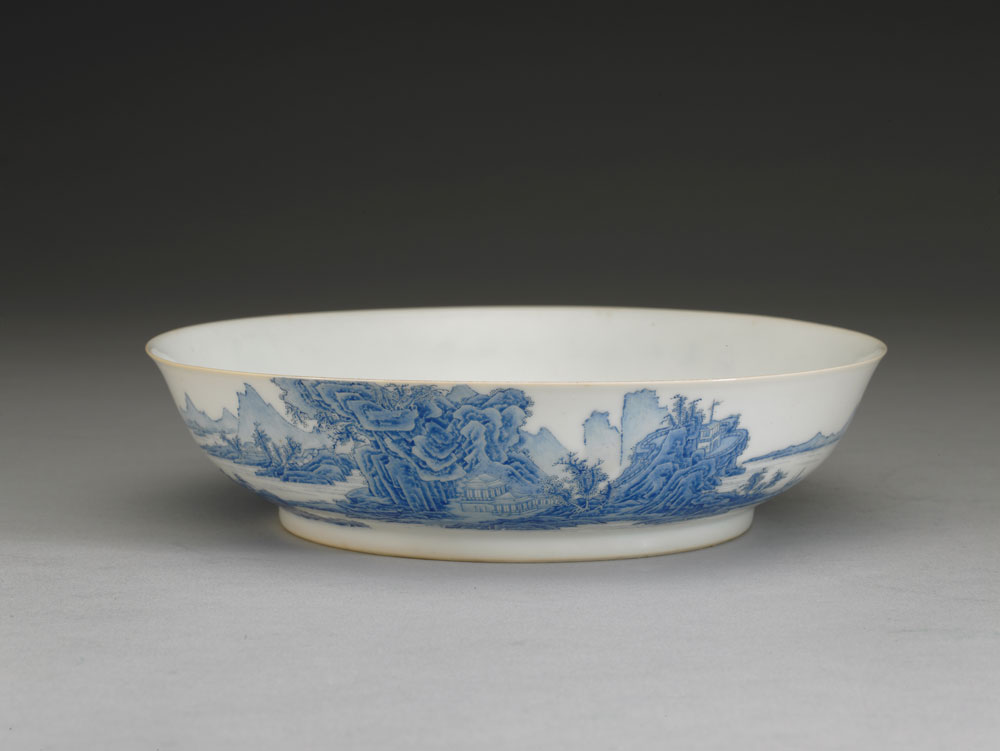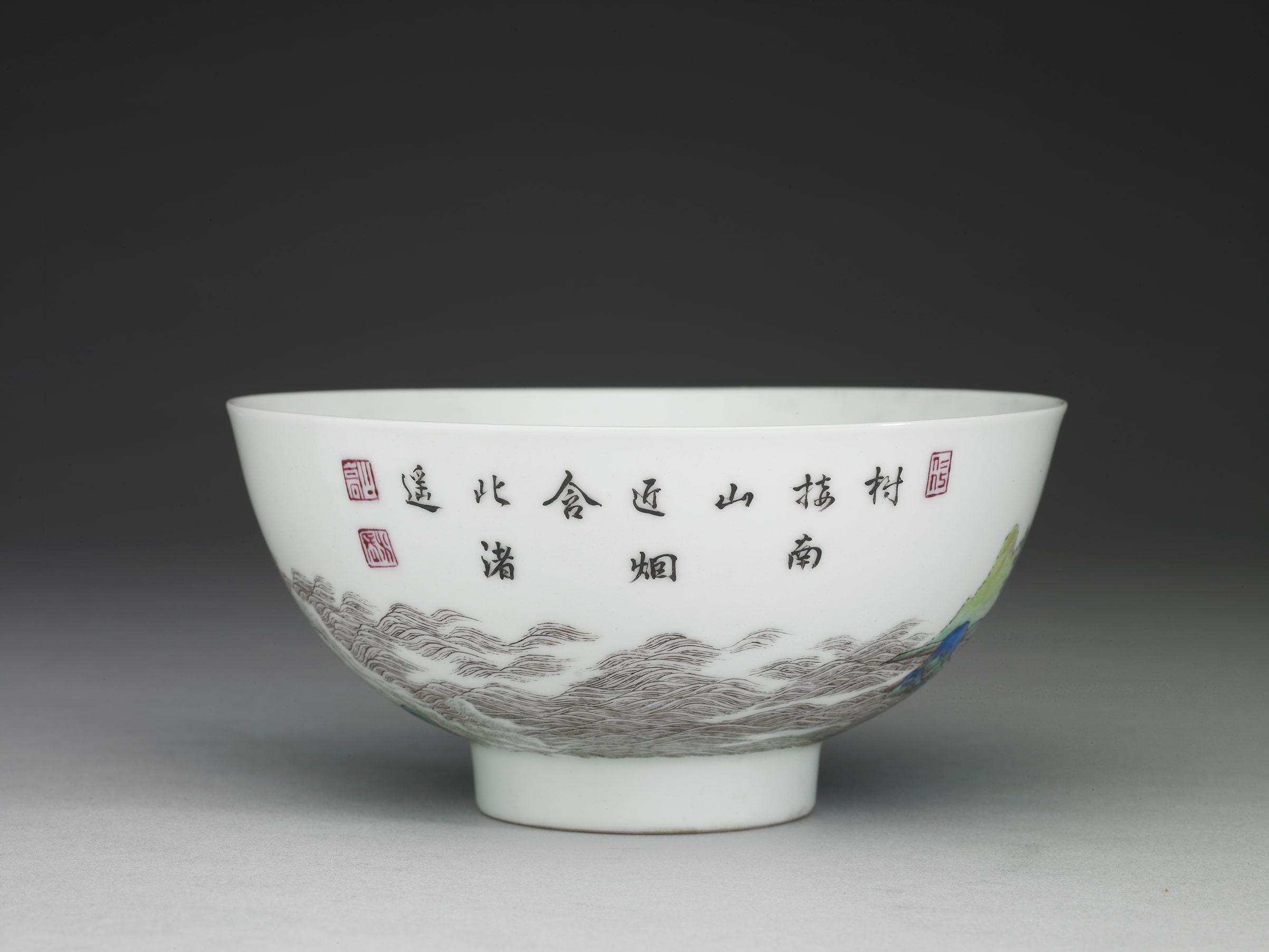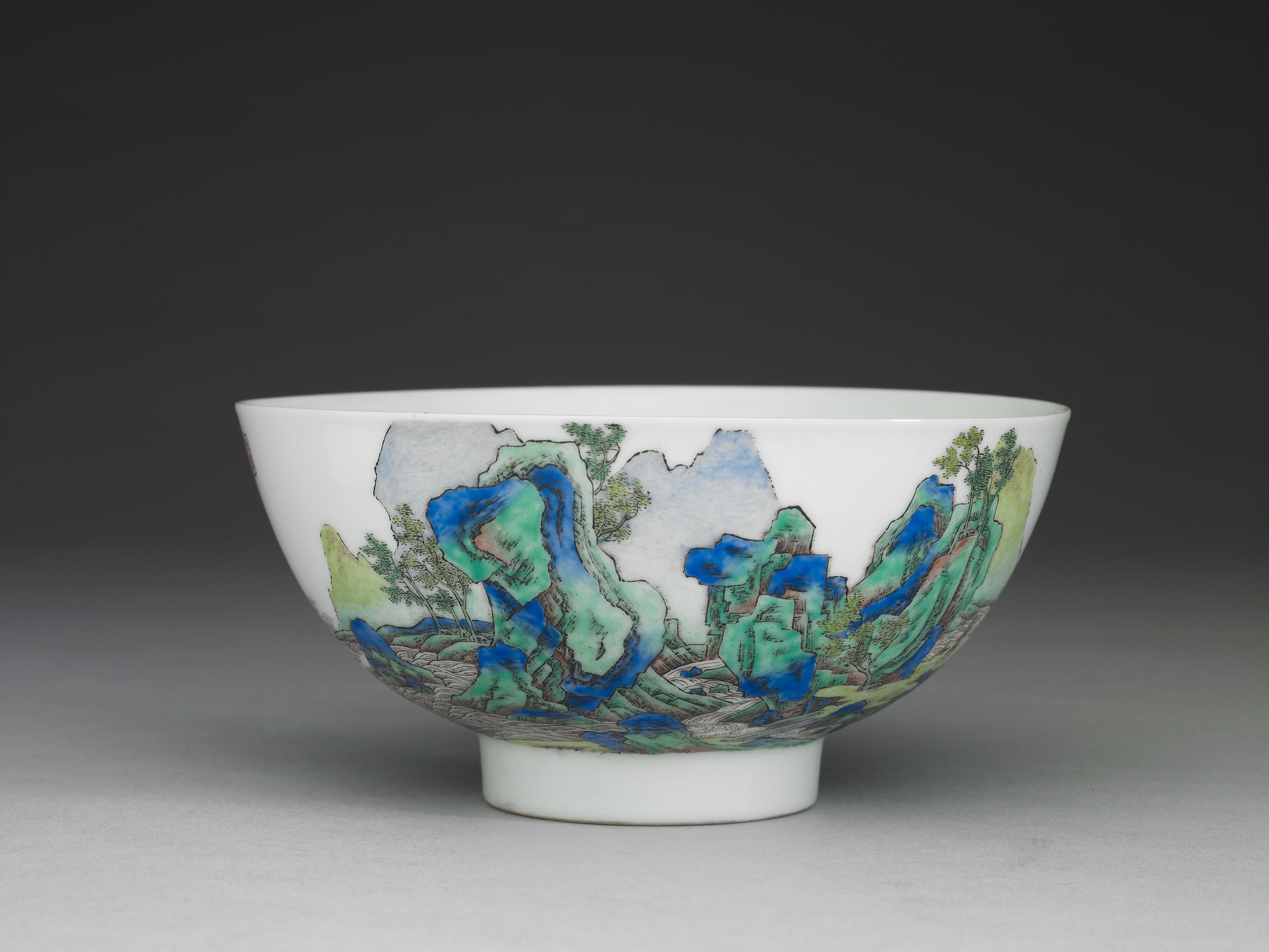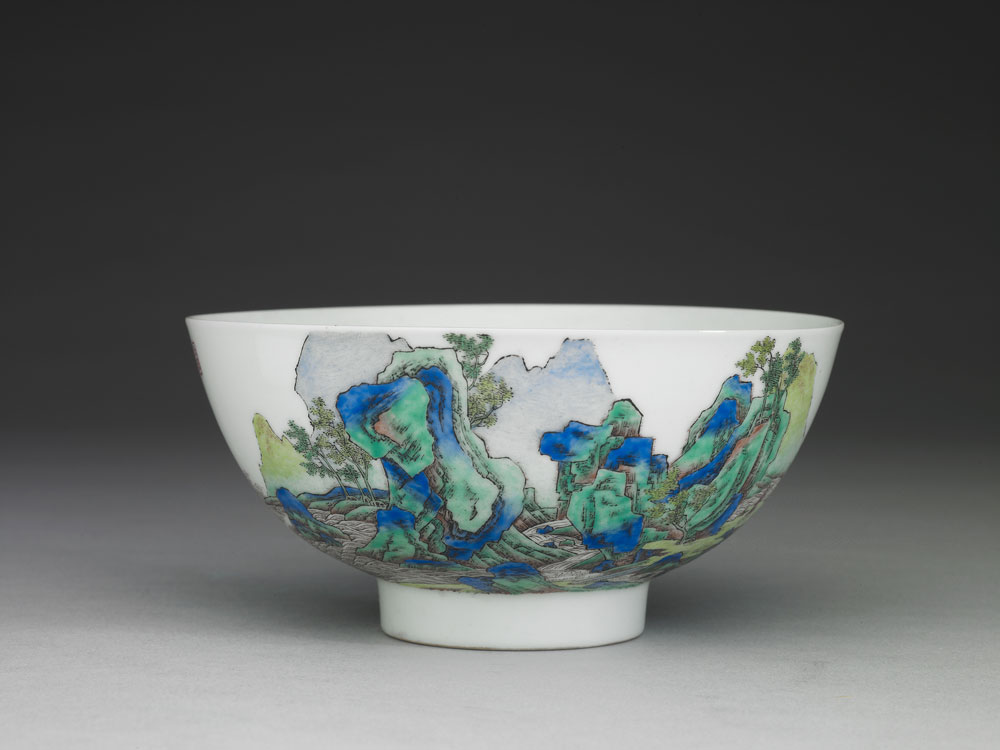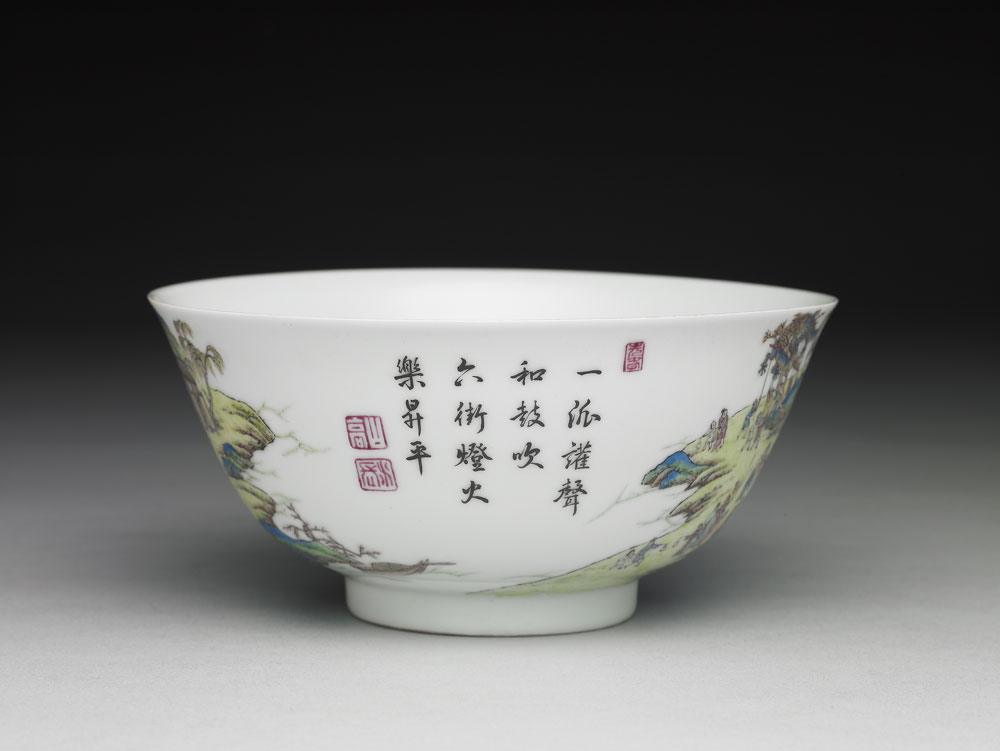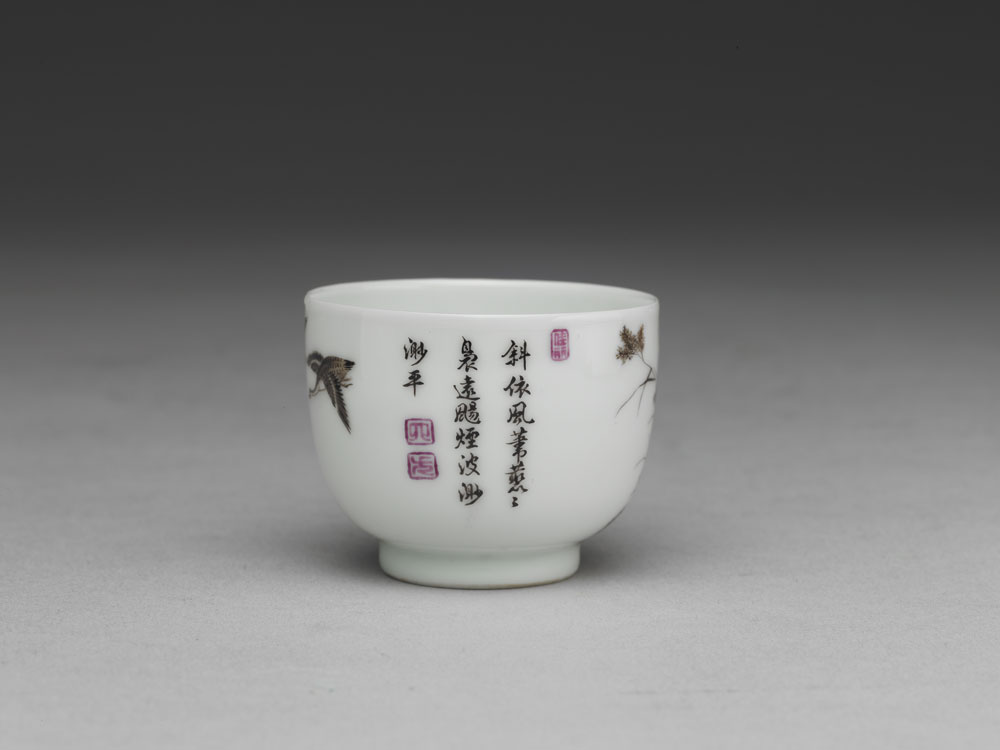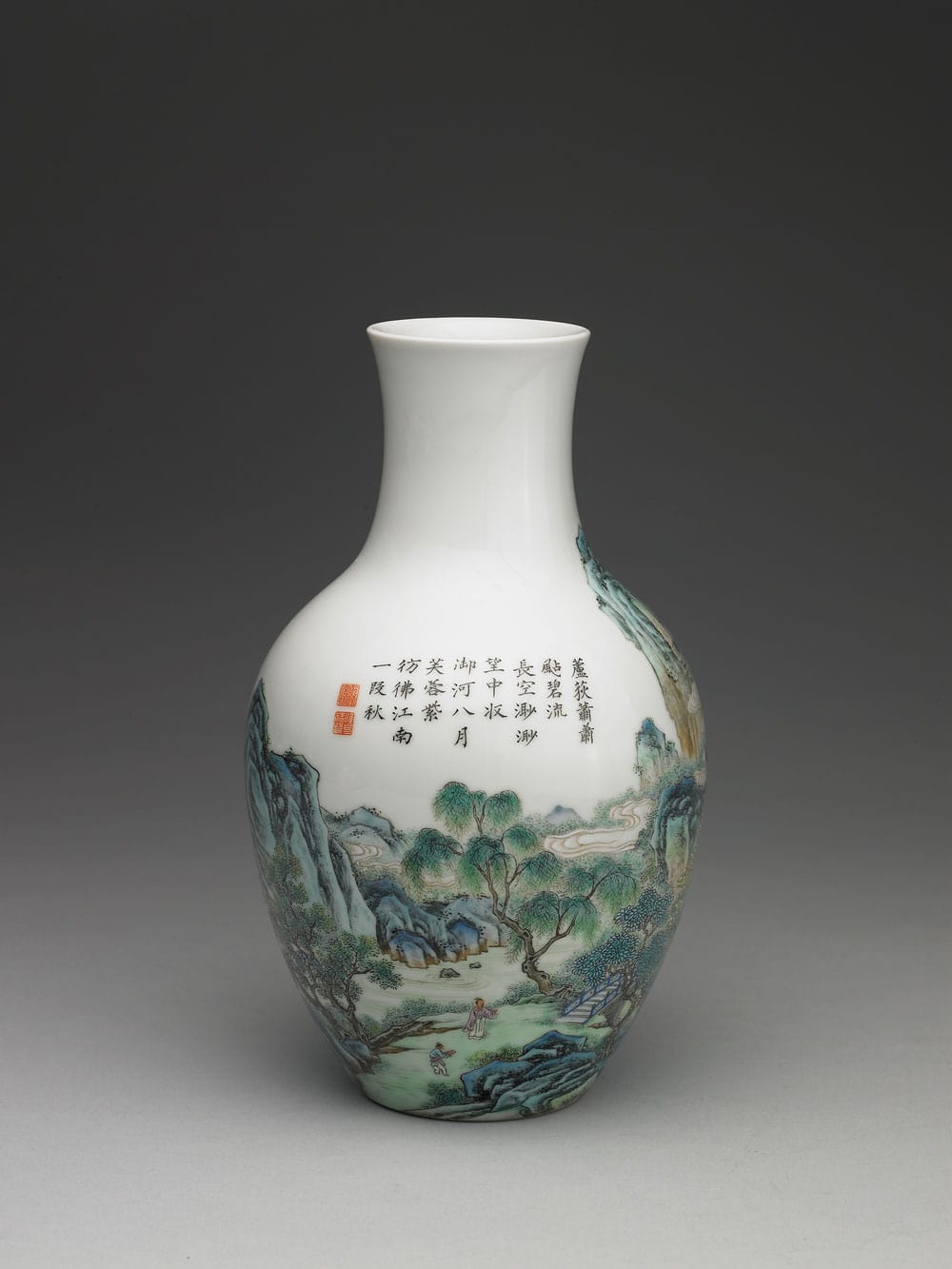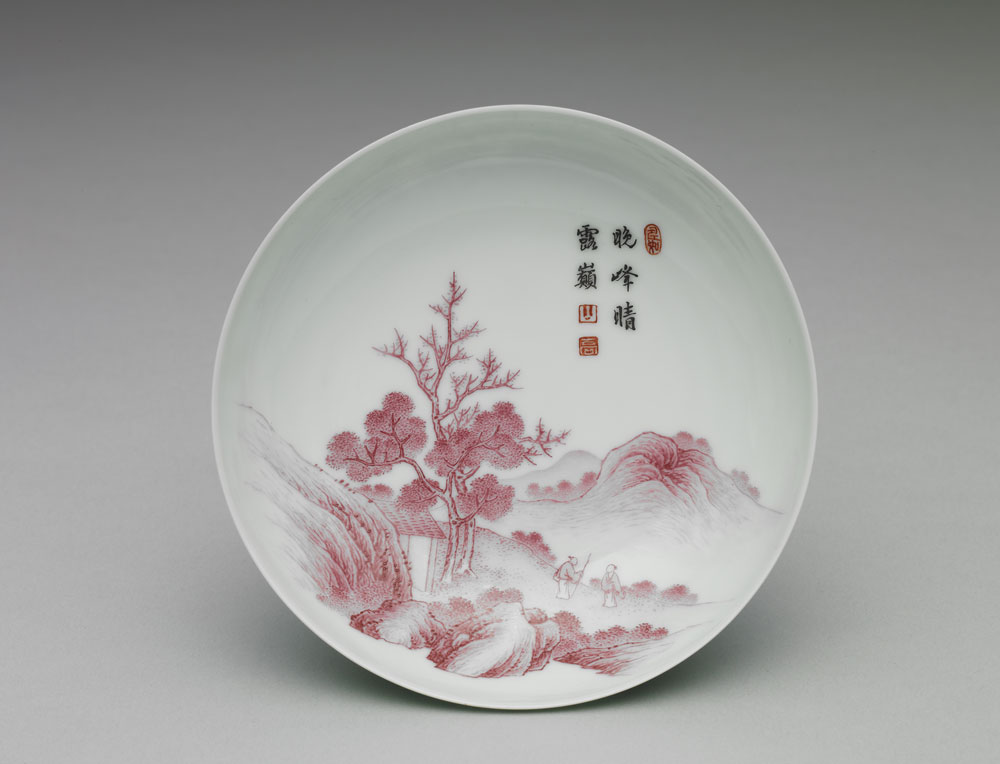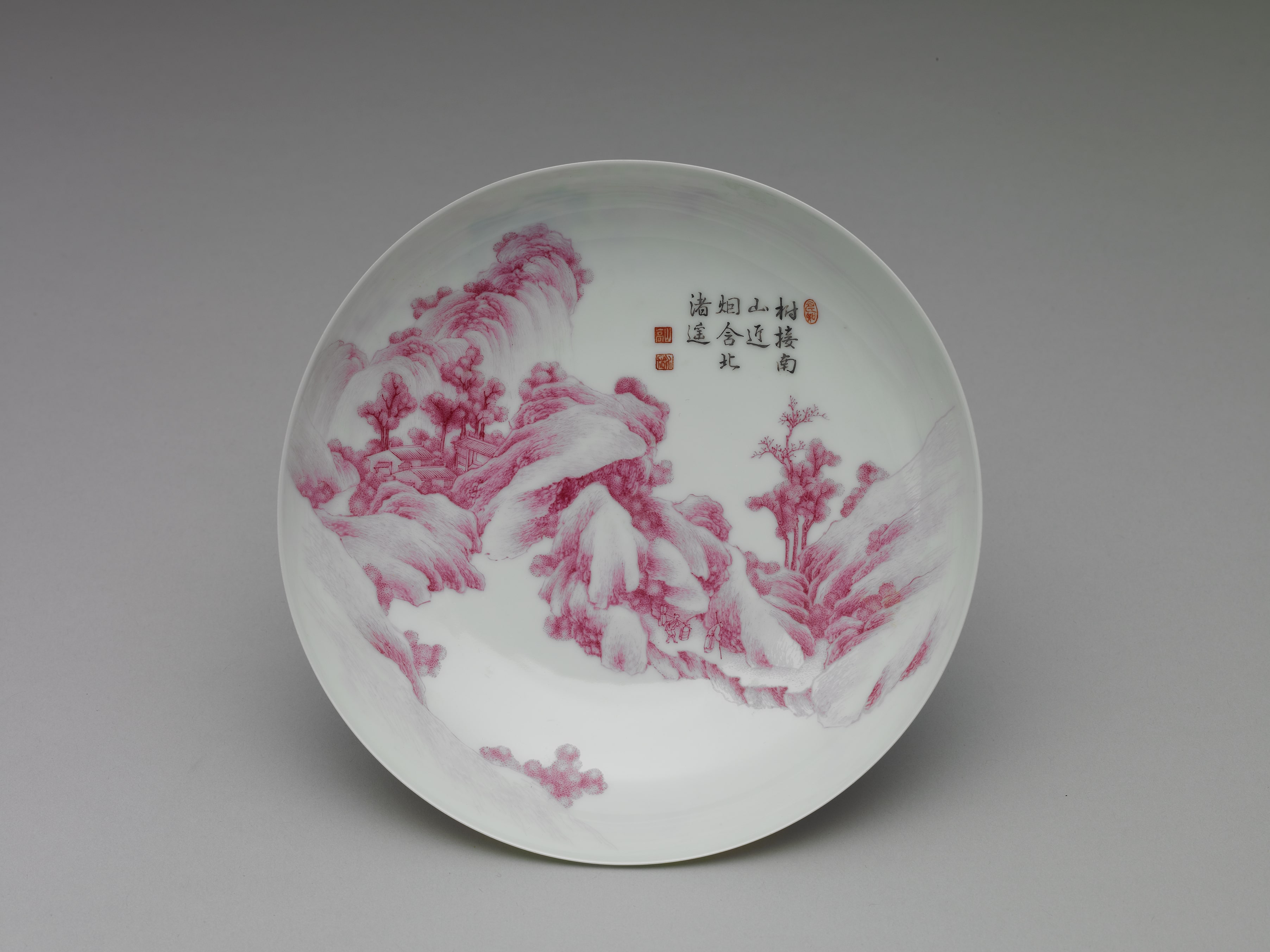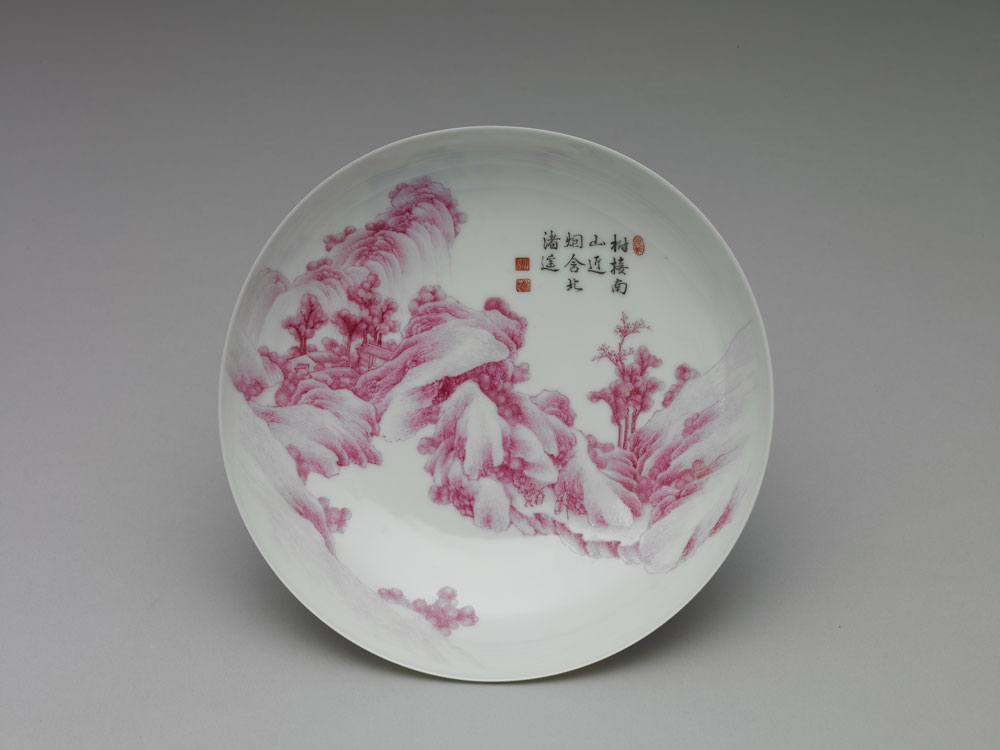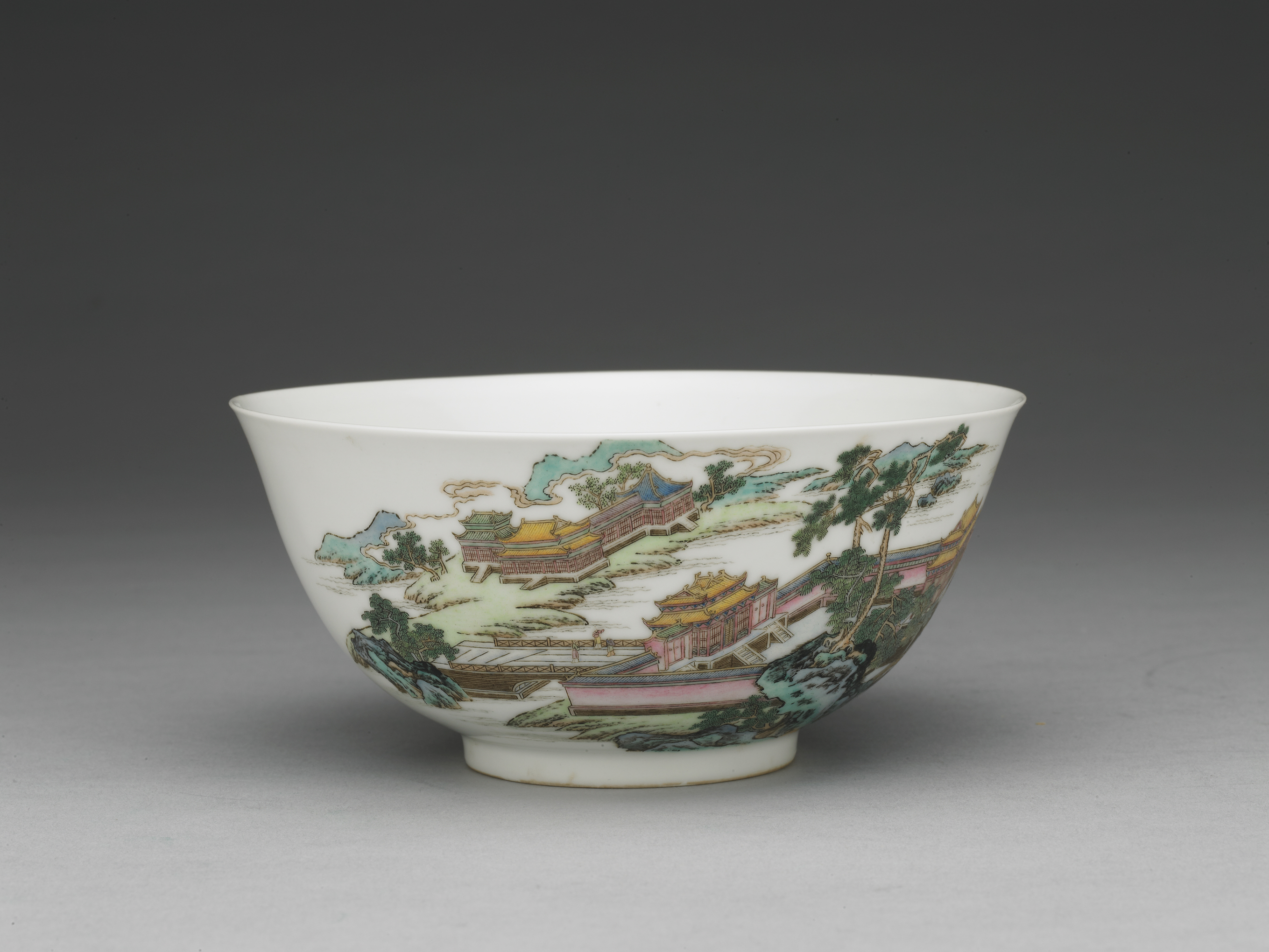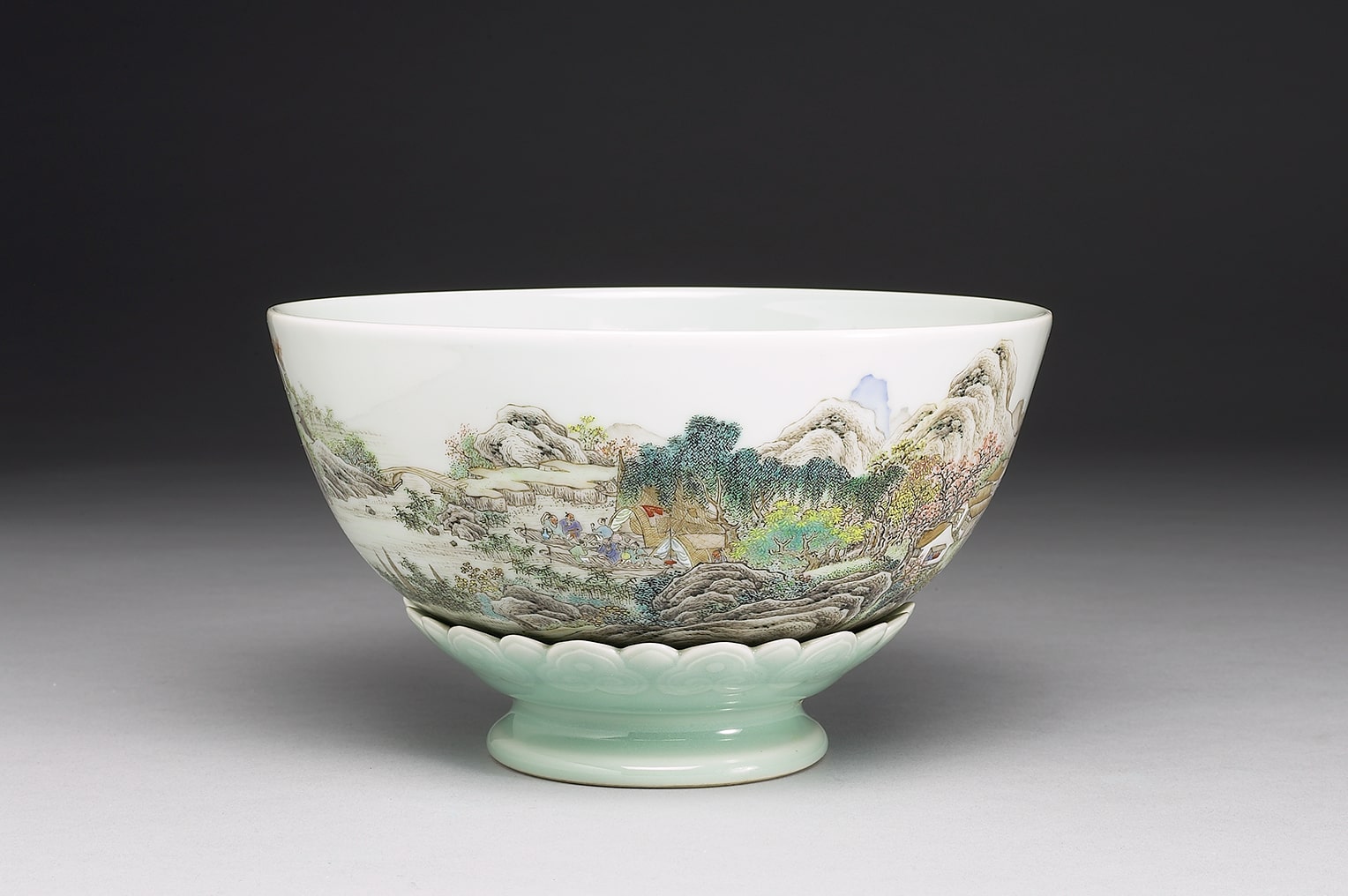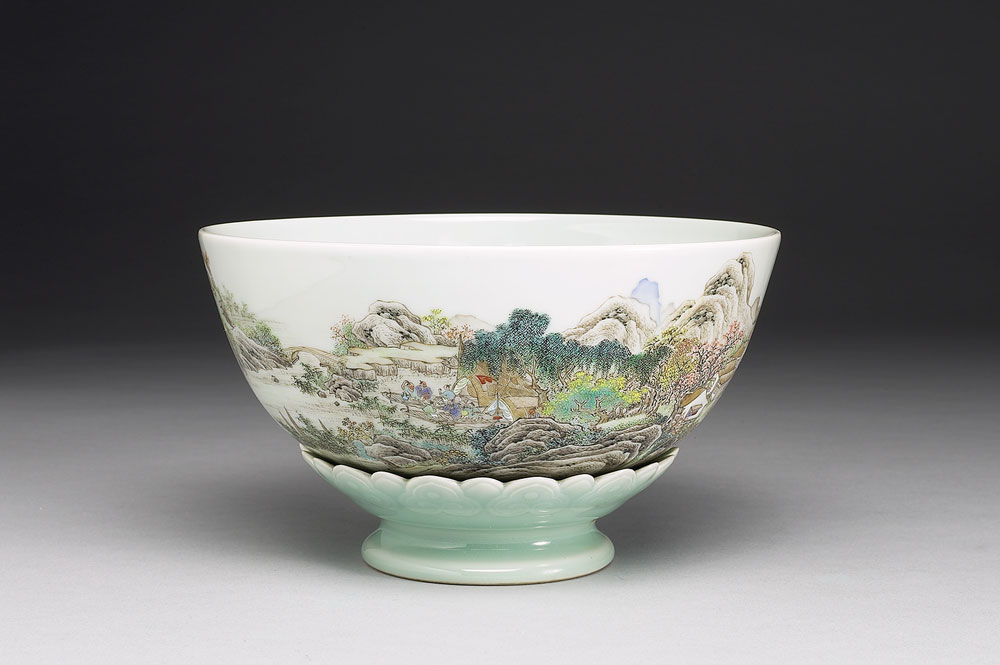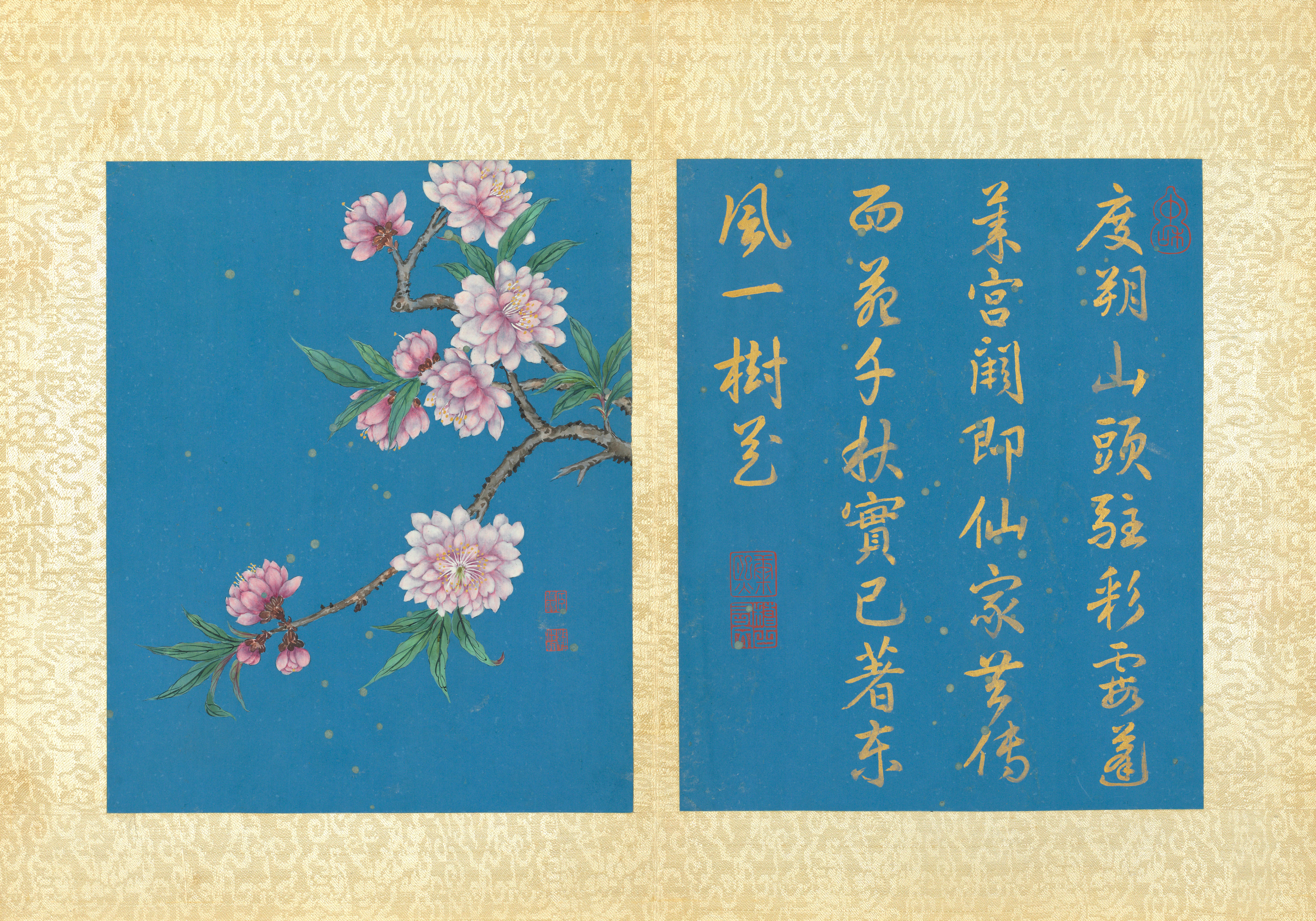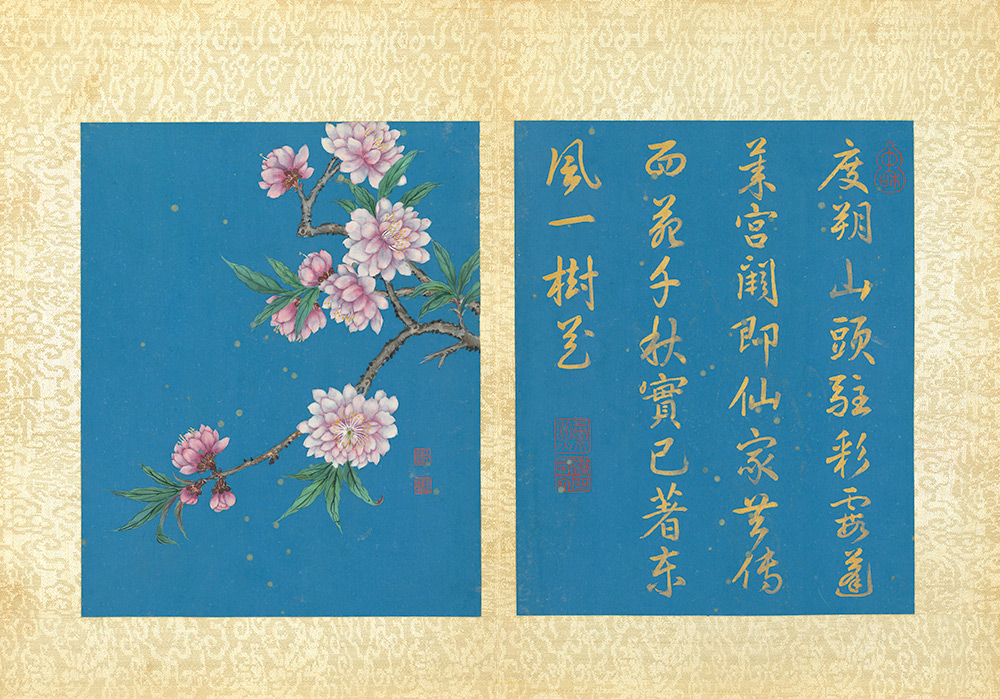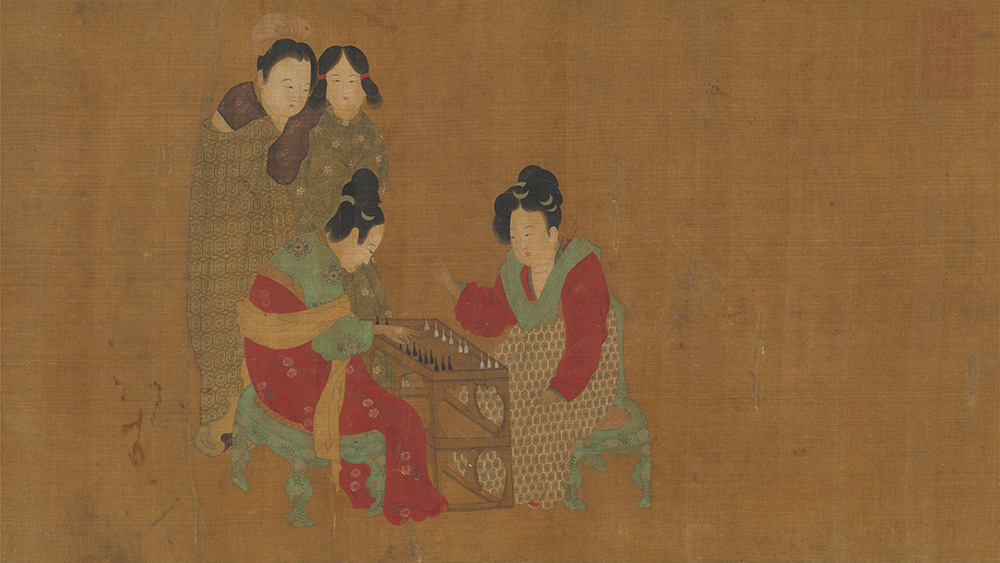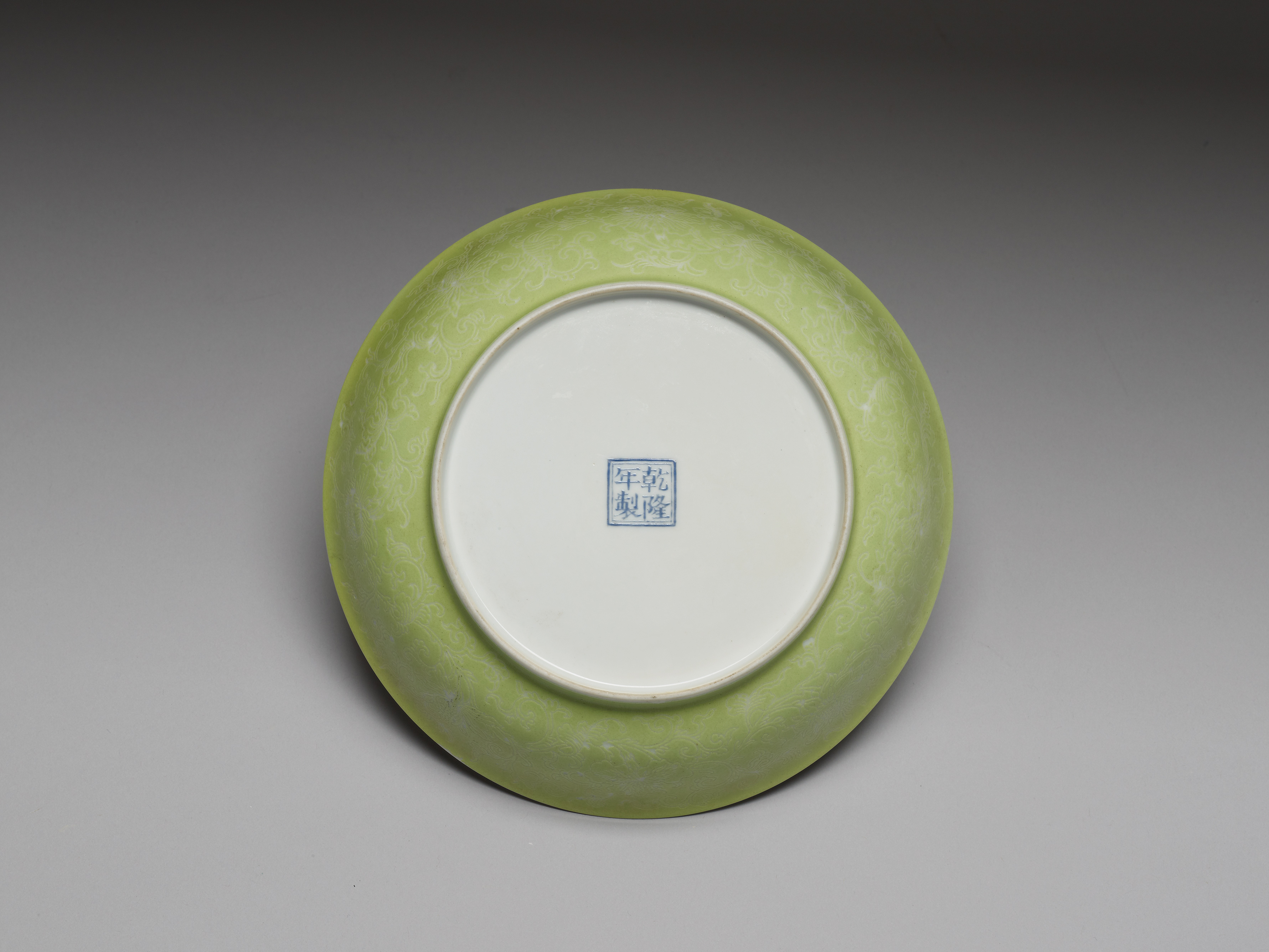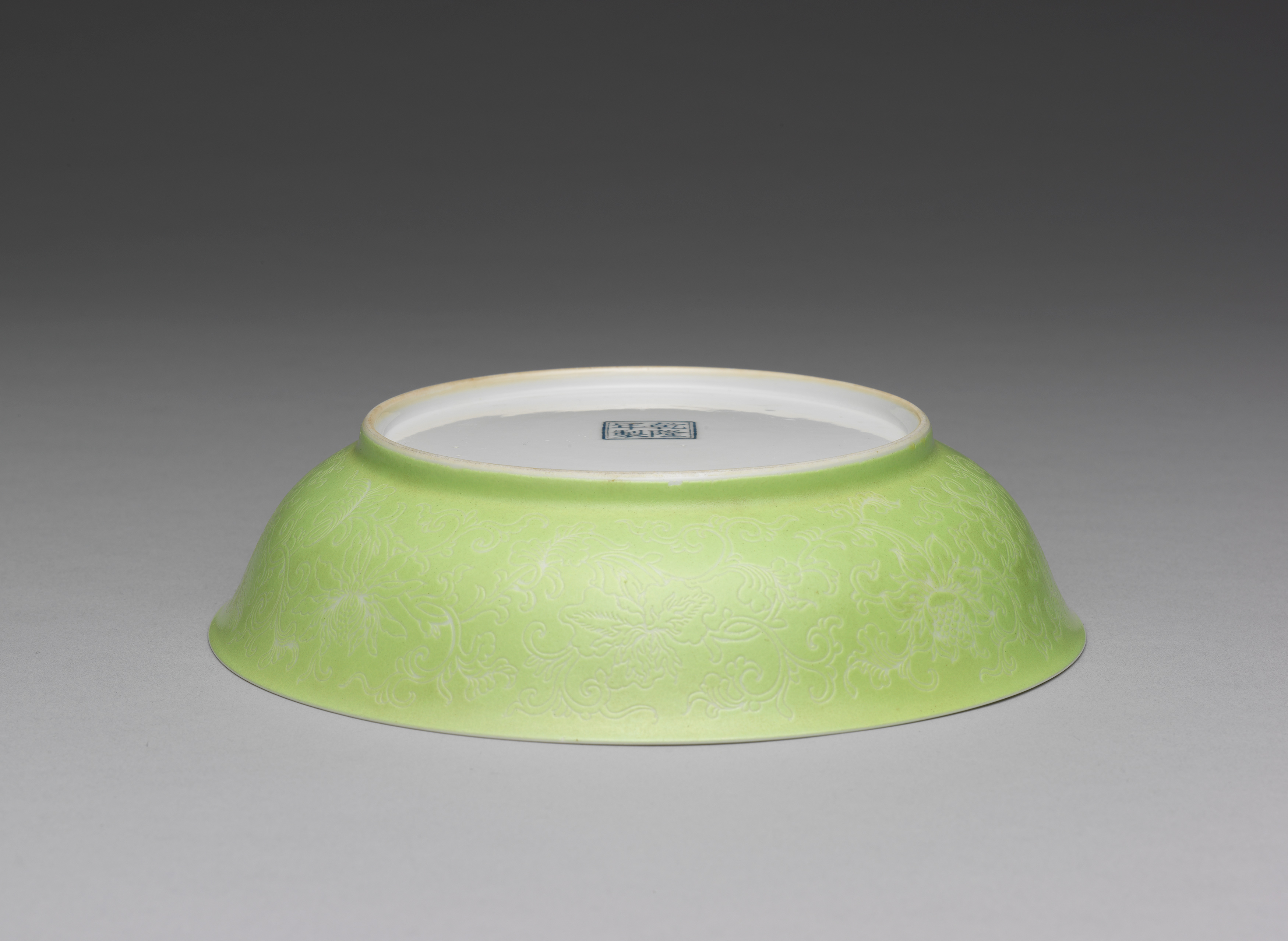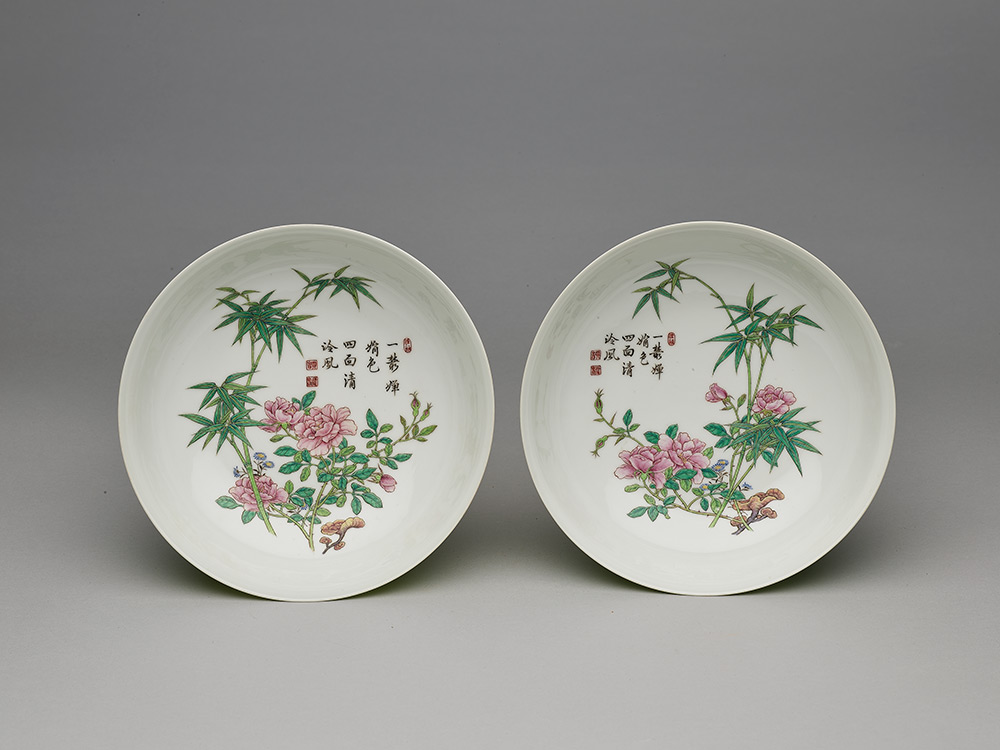Convergence of Tints
The tints are referred to as the yangcai and falangcai painted enamels. If we go back to the 18th century, the porcelain in falangcai stands for the artwork that the imperial craftsmen had taken white porcelain produced in Jingdezhen as the base, then painted the decorations in pigments of falangcai painted enamels, and fired the works twice in Imperial workshops. On the contrary, the porcelain in yangcai refers to the artwork whose base and decorative ornaments were manufactured in the imperial kilns of Jingdezhen. Although the sites of manufacturing the final step were different, these two types of polychrome porcelain were fired almost simultaneously and shared decorative patterns in the reign of Qianlong (1736-1795). From the perspective of the pottery supervisor, he aimed to produce yangcai porcelain in accordance with falangcai porcelain. From the perspective of the emperor of the Forbidden City, when he made the imperial decree to store artworks, he put these two types of porcelains into one category. Therefore, when the porcelain in falangcai made in the Qianlong reign comes in the discussion, it is inevitable to place attentions on both of them in the concept of one official ware. Based on the inscription of the ornament, three styles are generated. The first group presents the style inherited from the Yongzheng reign. The second group introduces the alterations made on the poem selection and composition, and the focus placed on the enhanced details and colour variations on the paintings. The third group centres on the innovative yangcai that replaced ancient poems with the Imperial poems of Qianlong.
Connotation of Poems.Narrative of Paintings
Decorations taking on the theme of poetry complemented with paintings, and having meanings of the pattern delivered by front and back seal stamps, which is the template exclusive to the palace that promoted intentionally under imperial order by the Yongzheng Emperor in the Qing dynasty. The similar layout also existed in porcelain in falangcai painted enamels fired in the Qianlong reign.
-
Dish with blue landscape in falangcai painted enamels
- Yongzheng reign (1723-1735), Qing dynasty
-
Bowl with "Longevity Mountain and Fortune Sea" motif in falangcai painted enamels
- Qianlong reign (1736-1795), Qing dynasty
Newly Selected Poems
Since the poems complemented with paintings selected in the Yongzheng reign (1723-1735) mainly sourced from the poetry collection compiled under imperial order of the Kangxi Emperor (1662-1722), the porcelain in falangcai painted enamels produced in the Yongzheng reign could be fundamentally considered as within the same context extended from the Kangxi reign. As seen from the extant pieces, even if the selection of poem had appeared some pieces unseen in the Yongzheng reign, but generally remain within the scope of the Kangxi's poetry collection
-
Bowl with "Lantern Lit for the Peacefulness" motif in falangcai painted enamels
- Qianlong reign (1736-1795), Qing dynasty
-
Zhong wine cup with reed and goose in ink-colour falangcai painted enamels
- Qianlong reign (1736-1795), Qing dynasty
Imperial Poems by the Qianlong Emperor
Is it true? This emperor claimed that his leisure activity was writing poems. In all his life, he had written more than forty thousand pieces. As seen on the exhibits, the yangcai artworks produced in Jingdezhen are adorned with Imperial poems, with diverse contents that consist of the poems complemented with paintings that serve dual purposes, reflections and thoughts across four seasons, and even sights while crossing a bridge
-
Guanyin vase with landscape and figure in yangcai painted enamels
- Qianlong reign (1736-1795), Qing dynasty
Red Landscape
The sceneries and figures painted in red falangcai pigments are known as the red landscapes. In the third year of the Qianlong reign (1738), he held a copper snuff bottle with red landscapes, and complimented on the brilliance of its drawings. As the result, the craftsmen in the imperial workshops had transferred the red landscapes onto the porcelains.
-
Dish with red landscape inside a carved green exterior in falangcai painted enamels
- Qianlong reign (1736-1795), Qing dynasty
-
Dish with red "Longevity Mountain and Fortune Sea" motif inside a green exterior in falangcai painted enamels
- Qianlong reign (1736-1795), Qing dynasty
Towers and Pavilions in Mountains of the Immortals
Ever since the 16th century, the palaces from the Tang and Han dynasties had been embraced by the workshops in Suzhou Province as the significant inspirations to create paintings. Relatively speaking, the motif of "Towers and Pavilions in Mountains of the Immortals" appeared on the porcelain in falangcai painted enamels from the Qianlong reign should be regarded as an innovated pattern that coloured and enriched the polychrome paintings of the Yongzheng reign. According to the archives, it was no later than the 5th year of the Qianlong reign (1740) that this type of decoration had been produced.
-
Bowl with landscape and pavilion in falangcai painted enamels
- Qianlong reign (1736-1795), Qing dynasty
Foot-revolving Bowl
On the bottom of a bowl in general, there is a platform to have contact with the tabletop, which in pottery terms is named the "ring foot", and so the bowl with a body could be revolving on the ring foot is known as the "foot-revolving bowl." In 1743, Tang Ying presented nine styles of porcelains including the double-layered vase with open works and intricate revolving design. In the following year (1744), the Archive of the Imperial Workshop also recorded a piece of "large stemmed bowl with poem and landscape in yangcai painted enamels on a stand", due to the close timings of these two events, which reveals the production timeline of this type of artworks.
-
Revolving bowl with "Finding Pleasure in a Fishing Village" motif in yangcai painted enamels
- Qianlong reign (1736-1795), Qing dynasty
Motifs Based on Imperial Album of Painting
This porcelain vase in front of you has a similar shape with the token of backgammon (Shuanglu) in the ancient painting. Therefore, this vase is called Shuanglu vase. This work is coated with light blue glaze and painted with pink peach blossoms. The composition and colour remind of ‘Peach Blossoms' in the album "Gathered Fragrance of Collected Beauty" by Jiang Tingxi (1669-1732). It reflects that under the control of the emperor and the pottery supervisor, motifs on the yangcai porcelain wares produced by the Imperial kilns were designed possibly based on the imperial album of painting.
Designing Pairs
Catering for the Qianlong Emperor's ideas on producing and collecting artworks in pair, the decorative arrangement on the Qianlong porcelain in falangcai painted enamels often reveals the ingenuity of one echoing to another. Take porcelain dishes with poems for example. One dish has the design on its left side while the other one has the design on its right side. Ornaments on two dishes also show slightly different techniques. The arrangement presents the feature of designing pairs.
